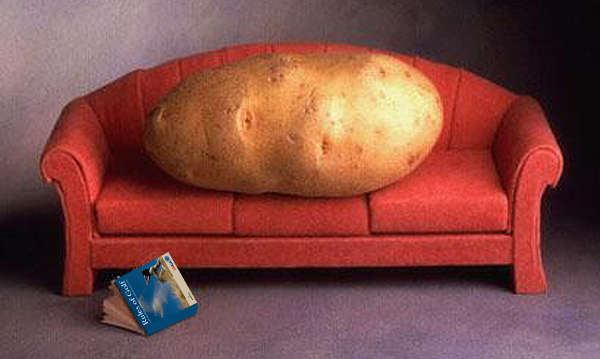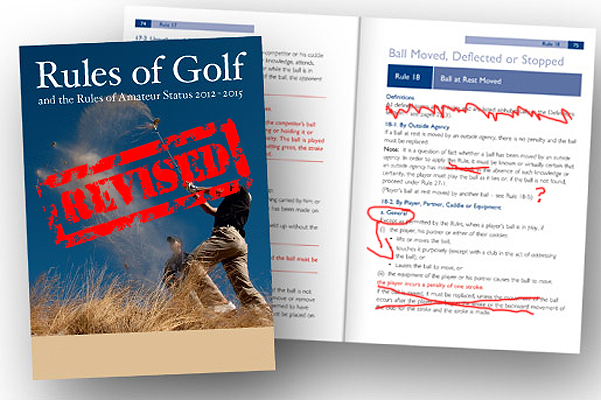With the powers that be in the world of golf ruling against the anchored putting stroke, a ban that will take effect as of 2016, we thought we’d take a quick look at some other rules changes that have occurred throughout the years.
Stymied
For many years when playing singles matchplay, marking your ball on the green was forbidden, even if it was directly in the way of your opponent. “Stymied” players would be forced to putt around their opponent’s balls or chip over them.

Imagine the shenanigans that would occur in matchplay if you still weren’t allowed to mark your ball on the putting greens!
It wasn’t until 1952 that this rule was abolished worldwide and green keepers all over the world, free of people taking divots out of their greens, celebrated wildly.
Golf…not Croquet!
The much talked about anchoring ban isn’t the first time a method of putting has been outlawed in golf. Seemingly golfers will try anything to improve the most important part of the game and long before long putters, both broom and belly, started nestling themselves in the gut and sternum of golfers around the world, Sam Snead turned to a croquet-style stroke which caught the attention of a certain Bobby Jones.
The unorthodox method, which did bring Snead a certain level if success, was disapproved of by Bobby Jones after the 1967 Masters and just a few weeks later it was banned from golf for good.
Take a drop? How do I do that?
Over the last few weeks golf has seen its fair share of contentious drops, most famously Tiger’s at The Masters, so it’s just as well that the powers that be in golf have made the method of dropping the ball as simple as possible.
Throughout the history of golf, there have been a number of different ways in which players were required to drop the ball should they have sent a shot sailing into the drink and / or lost one in the cabbage. Early R&A rules included dropping a ball over the back of your head, throwing it at least 6 yards (random!) and, more recently, players dropping a ball would have to do so over their shoulder. It wasn’t until 1984 that the current dropping method – arm extended at shoulder height – was introduced by the USGA.
The unoffical rules official…
The last few years have seen plenty of eagle-eyed, unofficial rules officials calling in from the comfort of their arm chairs to point out rules infractions committed by professionals playing in televised events.

Golf seems to be the only sport in which an arm chair fan can referee the game. Thankfully the powers that be have limited the effect these eagle-eyed golf fans can have on a tournament.
The likes of Padraig Harrington, Camillo Villegas and Tiger Woods have all fallen foul of the golf know-it-alls in recent years and this caused the rule makers to act in order to protect the players from being disqualified for minor infractions.
Rule 33-7/4.5, which kicked in before the start of last year’s season, now ensures that a rules violation spotted by a TV viewer can still be penalized, however if the player has already signed his or her scorecard, they can no longer be disqualified from the event.
Groovy Golf
Rewind the clock back a couple of years and there was a growing trend of players blindly pounding driver off every tee knowing they could wedge it close as long as their ball was on dry land. This was made possible by box grooves on wedges which, when used by the world’s best golfers, could produce huge amounts of spin and thus control from even the thickest of rough.
The powers that be banned such grooves and introduced newly shaped alternatives which essentially cut down on the amount of spin a player is able to generate. The new rule went into affect prior to the start of the 2010 PGA Tour season and will be enforced in amateur golf beginning in 2016.
Funnily enough, scoring averages on the PGA Tour have since come down, proving that perhaps a more prudent strategy from the tee is the key to lower scores.
Blustery Balls
Lots of rules in golf are seen as archaic and rather pointless in the modern day and age. Having to play from someone else’s divot is one that really gets me going but let’s leave that for another day!
Another pointlessly harsh rule was the one that penalised players if a gust of wind, or some other element beyond their control, caused their ball to move on the green after they had addressed it.
It took numerous high-profile incidents involving the likes of Webb Simpson – the 2012 US Open Champion Simpson took a self imposed penalty for his ball moving before a tap-in that probably cost him the 2011 Zurich Classic – for the rule to be changed but now if a player addresses the ball, and something other than their club causes it to move, he plays it from the new spot with no penalty.
Common sense has prevailed in some aspects of golf. Which rules would you like to see reviewed? Leave your comments below and we’ll write to the USGA and R&A in due course…





A ball coming to rest in a divot providing it is on the fairway should receive relief as in winter rules. It is an unfair punishment for a well struck shot.
Playing a ball out of a divot is most unfair and also the divot hole is made much larger by playing it as it lies